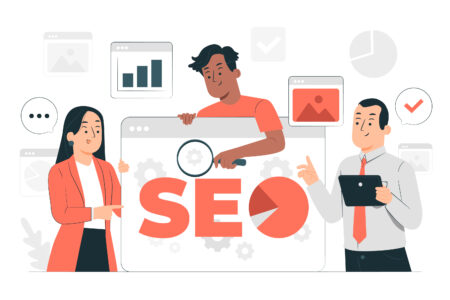5 minutes read

There are about 3.5 billion internet users around the world today, representing more than 40 percent of the world’s total population. Considering the increasing market penetration of mobile devices and mobile internet, the cyberspace has become the ideal avenue for businesses to reach out to their target audiences and expand their brand recognition and reach.
The question now is, how can your business rise above the noise and effectively corner your market? Yes, you have your optimised website and social media pages, but numerous other businesses also have those. What can give you that edge that will help you convert online followers into loyal customers? Content marketing is that silver bullet.
What is content marketing?
Content marketing is the process of creating shareable online material – blogs, images, videos, and infographics – that features valuable and relevant information about your products and services. The objective of content marketing is not to sell or advertise. Rather, it aims to educate your target audience on the benefits of your product or service and establish your business as the foremost authority in your particular industry.
A good content marketing strategy stimulates the interest of consumers and highlights the value of your products or services.
For example, instead of directly advertising your clinic’s liposuction services, you can create an infographic on the immediate benefits of liposuction. Another option is to produce a short video on the innovative liposuction technology you are using, and showcase its advantages over other liposuction methods and technologies.
The keywords here are valuable and relevant. Do not fall into the trap of producing eye-catching online content that contains more fluff than valuable information. Consumers need worthwhile data that will help them decide whether your product or service makes for a valuable investment. They need the assurance that they are making a smart decision by acquiring your products or services.
In a recent survey by Nielsen, the global marketing research firm found that most consumers perform an online research before they buy a product (i.e., 63 percent of buyers in the survey’s Travel Products & Services category searched for product information before making a purchase). This coincides with an earlier study conducted by MineWhat.com, which shows that 81 percent of shoppers research online before buying.
Content marketing allows you to answer that need – and in the process, it establishes your business as the trustworthy choice in your industry. And when your target audience sees you as the ideal choice, you earn their trust and confidence. If the need arises, they are more likely to tap into your expertise rather than some other service provider they barely know about.
What content marketing vehicles can you use?
- Infographics – Informative visual content is heralded as the most engaging and effective form of content, as human beings are inherently visual creatures – in fact, according to studies, the human brain processes visual content approximately 60,000 times faster than text.As such, articles with images average 94 percent more views than articles without, while 67 percent of consumers say images influence their buying decision more than product information and customer reviews. Facebook also reported that posts including photo albums, photos and videos have higher engagement rates: 180 percent, 120 percent, and 100 percent respectively.
Photo caption: Infographic created by the USEO team for a client
Infographics is ideal for content marketing as this content form allows businesses to relay valuable information in an organised and artistic way. Viewers are not turned off by blocks of text, and if they find your infographic interesting, they will share it on social media channels, which earns you more viewers and followers as a result.
- Videos – In a 2016 article by Tech Crunch, it reported that Facebook logs 8 billion view views a day from 500 million users. On the other hand, a 2015 survey by Animoto showed 4 times as many consumers prefer watching a video rather than reading about a product. The cloud-based video creation service provider also highlighted that 1 in 4 consumers tend to lose interest in a company if its website or social media pages do not have videos.
- Blogs – Though more people are leaning towards images and videos, it does not mean that blogs are out of the picture. Blogs are still the more favoured content if you want to publish research-intensive and highly detailed information. In fact, a survey performed by Orbit Media on 1055 bloggers showed that the length of blogs has increased over the years, from 800 words in 2014 to 1000 words in 2016.Of course, to deliver high-value content, bloggers now spend an average of 3 hours for a post, compared to 2.5 hours previously. Their efforts are paying off, however, as lengthier and more information-rich blogs earn better responses from readers. Bloggers also include more visual content – multiple images and videos – to elicit stronger responses from their audiences.
Another driving factor of content marketing is how it correlates with social media. These content formats can be easily shared online, which essentially amplifies the exposure and recognition for businesses and brands. As more people get to know your products and services, and identify you as an industry leader, you become their preferred choice, and you build a loyal following of clients.
Interested in content marketing? Talk to the experts at USEO and learn more about growing your online influence and reach through this digital marketing strategy.



 5 min read
5 min read



